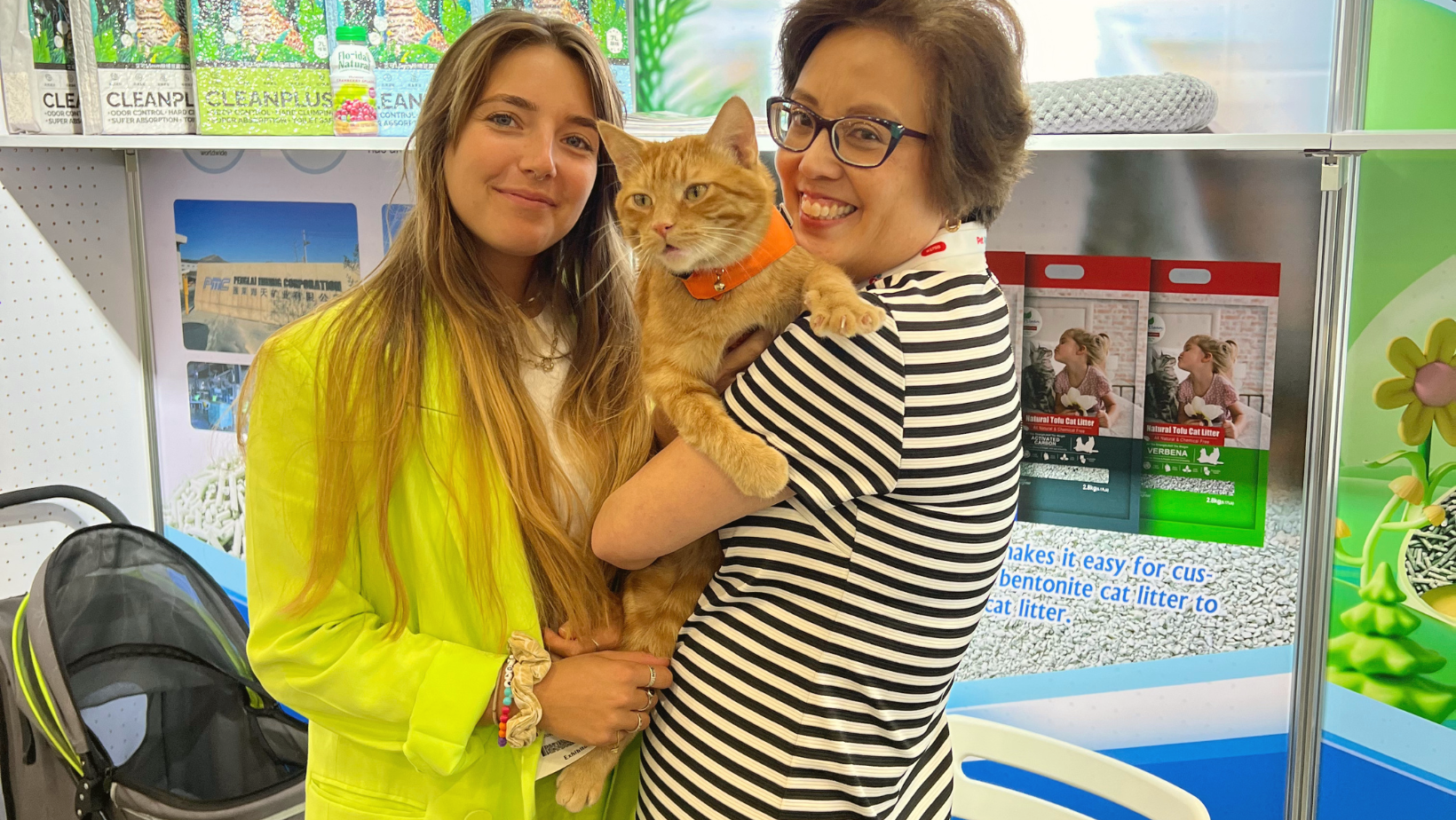What is the difference between PR and Marketing?
In this episode of The Whisker Report, Mary and Alex dive into the essential differences between PR and marketing and why both are critical for your pet business. Whether you’re a pet store owner, a veterinarian, or a pet influencer, this episode will help you understand how to promote your brand effectively. Learn how PR builds relationships and shapes public perception, while marketing drives sales and boosts revenue.

And if you can’t listen, here is the recap!
Alexane: Mary, you come from a background of journalism, and that’s how you got into PR. So could you try to define what PR is for listeners?
Mary: Yeah, it’s really simple. It is managing the public image of a brand, individual, or group, and it’s about building and maintaining relationships with the public, media, and other stakeholders. What’s really interesting is people don’t really know what PR is. PR is technically part of marketing, but it’s a unique part of marketing in that we don’t buy ads, right? Everything in PR is about PR people having the influence to approach reporters and others to build trust with the people putting out information. We’re talking reporters, pet influencers—it’s about getting out there and persuading these people that you have a great company or nonprofit that needs coverage. So that’s PR in a nutshell.
Alexane: So what you’re saying is PR is all about the image of the brand or nonprofit. Marketing is usually about sales, but PR is about reputation.
Mary: Yes, it’s reputation management. It’s not just media relations, which is the majority of what we do at Whisker Media, but it’s also crisis communications, employee communications, events, and thought leadership, where you position a CEO as an expert and get them coverage based on their expertise. PR really has a wide reach. But, you know, PR is also part of social media and digital marketing because there’s a blur between PR and other fields of marketing. Everything is starting to blur together. PR people need the digital aspect—we need to put out emails and collaborate with all the different people involved.
Alexane: Yeah, no, for sure. And I think one thing that’s a bit tricky right now is influencer marketing. Influencer marketing is kind of PR because it’s all about building relationships. If influencers are considered media, then it is PR-related, but we also call it influencer marketing because you’re trying to market your product to them. So yeah, it’s all a bit of a blur, and the line between the two is getting thinner.
Mary: Oh, it is, and it’s really hard. You know this—when we have new clients, during the first intake session or before they hire us, they’re asking what we can do for them. And a lot of times, we have to tell them, unless it’s in the scope of work we agreed on, that we’re not doing advertising for them. We’re not pay-for-play. We’re more about reaching out to our database of contacts that we know. We go to trade shows and conferences, and Alex, you just went to Inner Zoo and made all these contacts there. That’s for future use for media placement, correct?
Alexane: Yeah, exactly. I think that’s what PR is all about. Like you said, it’s networking and building a database where you can reach out to people to cover your clients, and that’s what we’re really good at.
Mary: Yeah, absolutely. So what do you think when it comes to working with influencers? In the media world, it’s easy to vet the reporter. Can you explain how you do that with social media and pet influencers?
Alexane: Yeah, for sure. We’ve been working with influencers for a few of our clients, and it was new for us when we started because we hadn’t done it before. You quickly realize what kind of influencer works for your brand and what doesn’t. First of all, the number of followers doesn’t really matter. They can have 100,000 followers, but if their engagement is low, it’s not going to work for us. We want an influencer with high engagement, someone people trust—trust their opinion and what they’re saying. Today, you need an influencer who is authentic and genuine, who won’t just advertise one brand of food one day and another the next. You need someone who genuinely loves your product and shares it from a real place.
Micro-influencers are also becoming better for brands because big influencers charge such high rates, and it’s hard for pet brands or nonprofits to work with them. We need to consider micro-influencers because, if they have high engagement and their audience is passionate, you’ll find success. Success in PR is about brand awareness and a positive image, and that’s the same with influencers. You can’t expect direct sales—it’s all about building that awareness.
Mary: We kind of talked about the differences between PR and marketing, but there’s some finesse between the two fields. Can you talk about that?
Alexane: Yeah, no, definitely. So as we said, you know, PR is about the reputation, whereas marketing, I feel like, is more about promoting or selling a product. Marketing is essentially more like SEO, email newsletters, email campaigns, and, you know, social media, social media advertising. But it can also even be more traditional, like billboards or flyers. So that’s why it’s very different than PR, but they still work hand in hand. That’s why the confusion is there.
Mary: Ah, that totally makes sense. So what are some of the strategies that you use in your daily work at Whisker Media?
Alexane: Well, I will just talk about one of our clients, like Purrniture. We had them a couple of weeks ago on the podcast. I really loved them. And just, I do a lot of marketing for them. So we do PR whenever, you know, they have something newsworthy, like when they had that thing, that broken window. But we also do marketing on a regular basis. Some strategies I put into place for them were to start an email campaign. So I send newsletters every two weeks.
Of course, it can be difficult to write about cat furniture every two weeks, because at one point, you just run out of things to say. So you have to understand that to still get the attention of your audience, you have to provide them with things they need or want. What we do at Purrniture is write newsletters about everything cat-related, because the people who read the newsletter, the ones who buy cat furniture, are also very interested in the well-being of their pets or, you know, like what kind of food is good for their cats.
So that’s one strategy we really put into place: to always try to provide something valuable. If you just send newsletters about, “Oh, this cat furniture is amazing, those stairs are great, those scoops to put on the wall,” well, your audience is going to unsubscribe because it’s just ads all the time. You need to find ways to promote or sell your product or service in a way that provides value to your audience, which can be tricky. You have to think outside the box. That’s what Mary always says.
Mark: Outside the litter box. Do you want to talk about a marketing example that really stands out with our pet clients?
Alexane: Oh, well, I remember when we worked with Simply Paws. Patty and her husband made a cat ramp out of cardboard, so the cat could scratch it, and it was designed to go inside the litter box. It would capture all the dust and little pieces of litter, so your floor would stay clean. I really liked that.
They were just a startup and didn’t really have any idea of what to do, so we implemented a social media strategy for them. We did a whole campaign on social media, and one thing you need to know when starting in marketing, especially social media, is to stay consistent. Stay consistent with branding, the fonts you use, and post quite often.
If you look at Whisker Media’s Instagram, you’ll see we have those yellow colors that we always use in our fonts. People don’t even need to know it’s us; whenever they see it, they’re like, “Oh, that’s Whisker Media, it’s yellow.”
Mary: Yes, we are yellow.
Alexane: So in marketing, you need something that differentiates you from others and really stands out so people know it’s you directly. That’s really important.
Mary: Do you think people, especially solopreneurs or little rescue groups with four volunteers, who are mostly rescuing cats and dogs, need to make time for PR and marketing? Do you think it’s critical enough to stop rescuing cats or dogs for an hour or two to do this?
Alexane: Yes, and I’ll give you my own example. I run a cat rescue in Greece called Saving Lives, and we rescue cats daily. We go out, trap them, get them neutered, and return them. It’s an everyday job. I completely understand the stress and time consumption; you just don’t have time for anything else, and it’s a hard life.
But once we started to put some work into social media, like videos on TikTok, that’s when we went viral. I took Mary’s advice about promoting yourself in a newsworthy way, and a video going viral is newsworthy. So I wrote press releases and sent them to my hometown, Amber’s hometown (my co-founder), and we got coverage everywhere—in the UK, my local hometown, even national newspapers like Le Parisien. I went on the radio just because a video went viral.
If I hadn’t put time into creating something good, like the style of videos similar to The Dodo, we wouldn’t have had that success. We now have over 50,000 followers, which means we get more donations to keep doing our work.
Mary: That’s amazing. I mean, so I hate to tell people this, but they have to do this. If you have a small business, and as I always tell my clients, you have to promote yourself. So you can hire a PR agency like ours.
We always try to put our mindset at Whisker Media as if your company is our company. We promote it like it’s our own company. But if you don’t promote your own product, no one else is going to care more than you do. So you are the perfect person to promote your product. And those of you who don’t like to promote yourselves, you got to do it anyways. That’s the only way you’re going to get money or you’re going to get donations or you’re going to get profit. Because people, there’s so much out there. There’s so much noise that you have to get through to get people to want to adopt an animal from your rescue or buy a pet product from you. It’s just, I can’t tell you the number of entrepreneurs that we meet at Whisker Media who are like, “I just want to hire you and then you handle it.” But I always think, and this has been from my personal experience, is behind a new product, that’s not really newsworthy. There’s new products coming out every single day, but it’s getting to know the story behind the company or the rescue. And so it’s storytelling.
